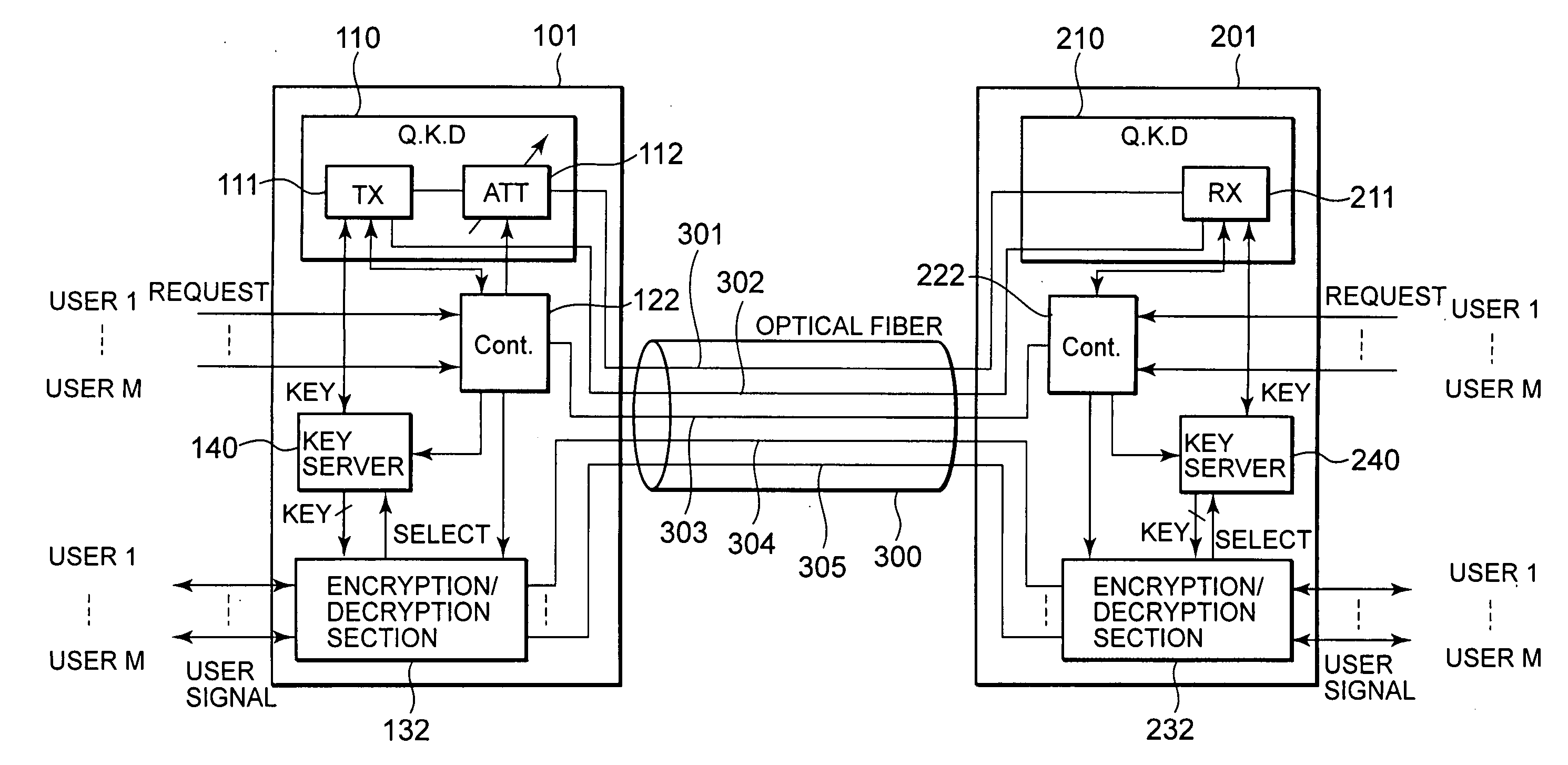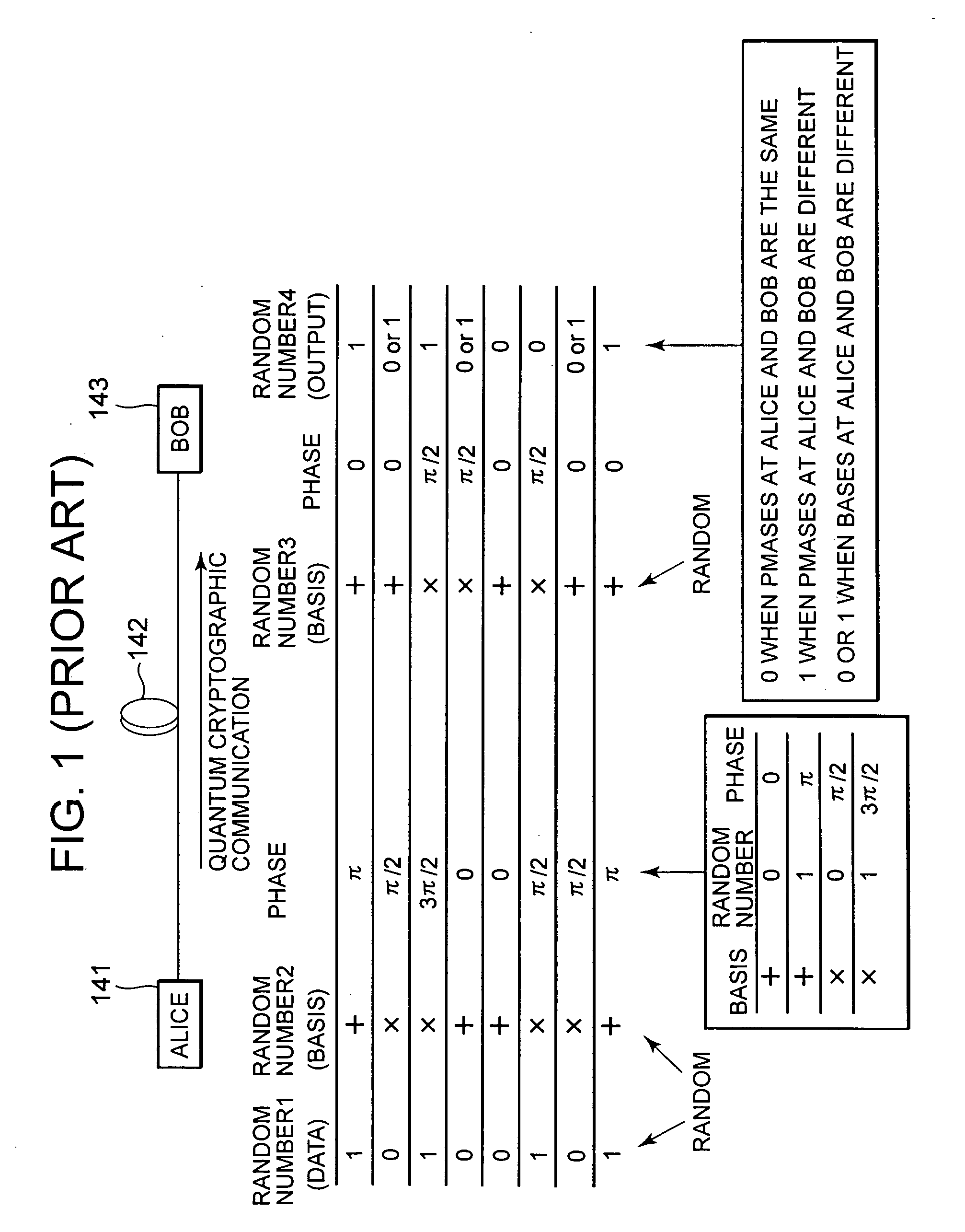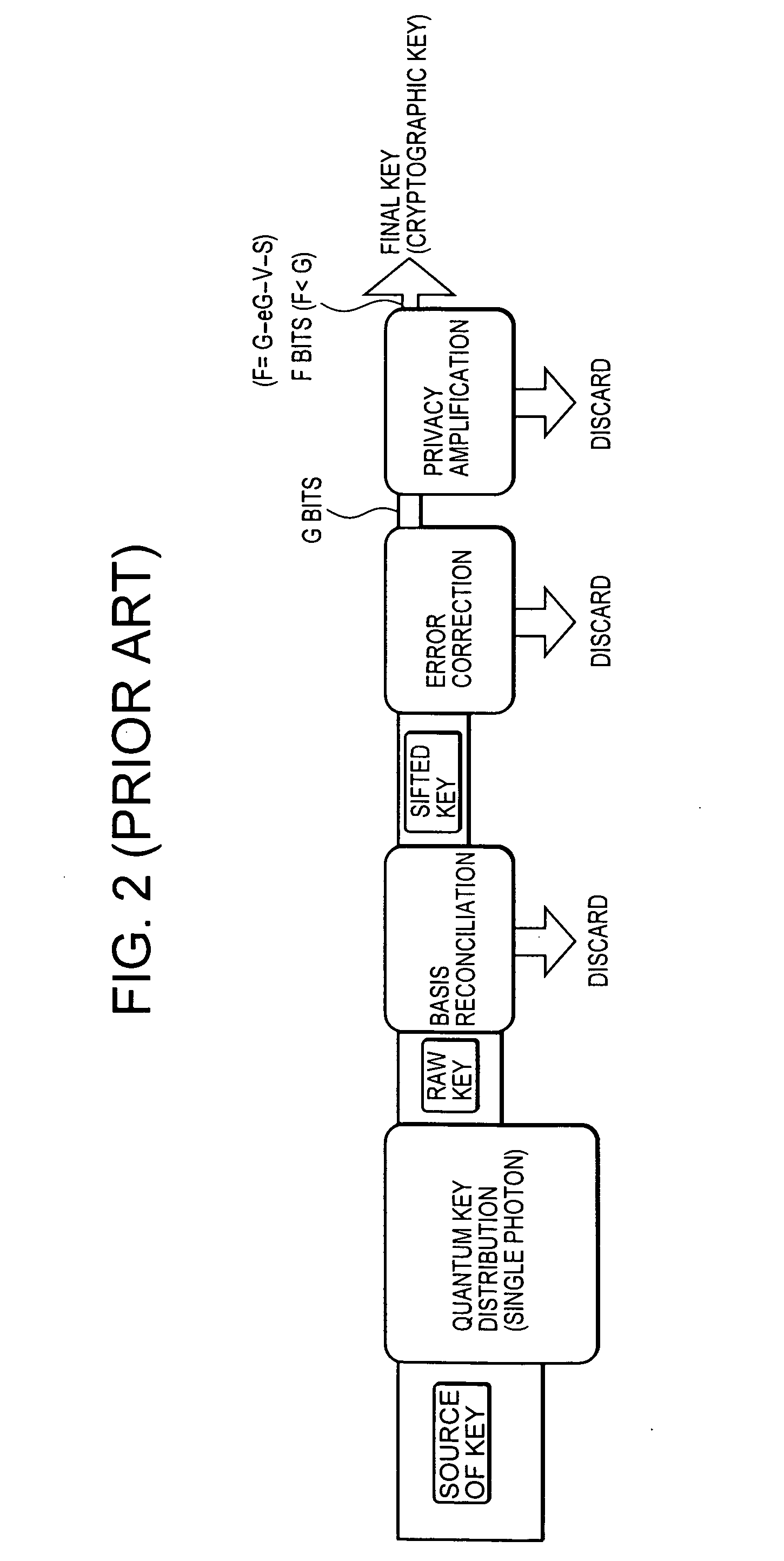Secret communication system and method for generating shared secret information
- Summary
- Abstract
- Description
- Claims
- Application Information
AI Technical Summary
Benefits of technology
Problems solved by technology
Method used
Image
Examples
first embodiment
3. First Embodiment
[0065]FIG. 6 is a block diagram showing a schematic configuration of a communication system according to a first embodiment of the present invention. By way of example, the present embodiment illustrates the case where a sender (Alice) 100 and a receiver (Bob) 200 are connected through an optical fiber transmission line 300.
[0066] The sender 100 includes a quantum key distribution (QKD) section 110, a security control section 120, and an encryption / decryption section 130. The QKD section 110 is provided with a QKD transmitter (TX) 111 and a variable optical attenuator (ATT) 112. The receiver 200 includes a quantum key distribution (QKD) section 210, a security control section 220, and an encryption / decryption section 230. The QKD section 210 is provided with a QKD receiver (RX) 211.
[0067] The security control section 120 controls the privacy amplification setting to be set on the TX 111 and the amount of attenuation to be set on the ATT 112, in accordance with a...
first example
3.1) First Example
[0074] A plug and play quantum key distribution (QKD) system will be described as a secret communication system according to a first example of the present embodiment.
[0075]FIG. 7A is a block diagram showing an example of the TX 111 on the sender side, FIG. 7B is a block diagram showing an example of the RX 211 on the receiver side, and FIG. 7C is a block diagram showing an example of any one of the encryption / decryption sections 130 and 230 on the sender and receiver sides.
[0076] First, in the RX 211 on the receiver side, a laser light source 211-10 driven by a driver 211-11 outputs an optical pulse P, which is sent via a polarization-maintaining-type optical circulator 211-7 to a polarization-maintaining-type optical coupler 211-6, where the optical pulse P is split into two parts. One of the two parts, an optical pulse P1, goes along a short path to be sent to a PBS 211-1 directly, and the other one, an optical pulse P2, passes through a phase modulator 211-2,...
second example
3.2) Second Example
[0082] A plug and play quantum key distribution system using a Vernam cipher and a PBS loop will be described as a secret communication system according to a second example of the present embodiment.
[0083]FIG. 8A is a block diagram showing another example of any one of the encryption / decryption sections 130 and 230 on the sender and receiver sides, and FIG. 8B is a block diagram showing another example of the TX 111 on the sender side. According to the present example, the encryption / decryption sections 130 and 230 use the Vernam cipher as shown in FIG. 8A. The Vernam cipher is a cipher in which the lengths of the plaintext and encryption key are identical. Therefore, the communication rate is substantially equal to the key update rate. The encryption / decryption sections 130 and 230 perform secret communication by using a Vernam cipher while controlling the data communication rate with information about the key update rate notified by the security control section...
PUM
 Login to View More
Login to View More Abstract
Description
Claims
Application Information
 Login to View More
Login to View More - R&D
- Intellectual Property
- Life Sciences
- Materials
- Tech Scout
- Unparalleled Data Quality
- Higher Quality Content
- 60% Fewer Hallucinations
Browse by: Latest US Patents, China's latest patents, Technical Efficacy Thesaurus, Application Domain, Technology Topic, Popular Technical Reports.
© 2025 PatSnap. All rights reserved.Legal|Privacy policy|Modern Slavery Act Transparency Statement|Sitemap|About US| Contact US: help@patsnap.com



